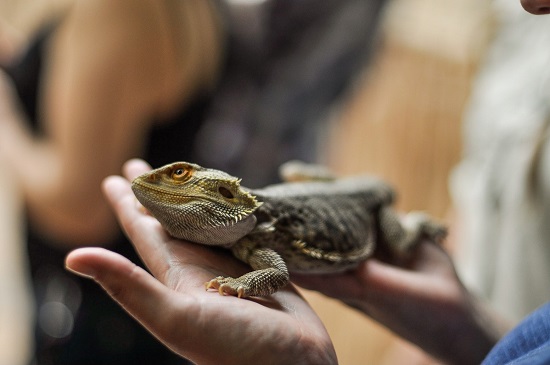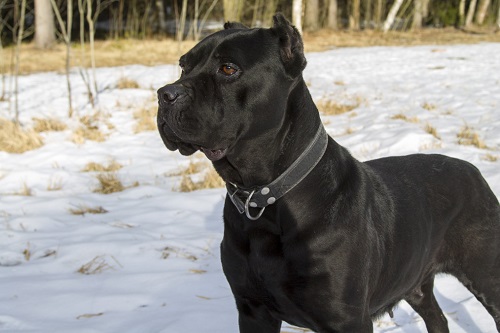The idea of having a lizard and a dog in the same household can be exciting for any pet owner. However, it can also be overwhelming and intimidating, especially when you have no idea about how the two can build a harmonious relationship.
If you’re not sure about how to introduce a lizard in a household with a dog, read on! I will share some practical tips that will help the two get along. It may not happen overnight, but with the right approach, it is possible to make your pets love each other.
The Best Ways to Introduce a Lizard to a Dog
Dogs can eat lizards. At the same time, if it barks a lot, it can create a stressful environment, which can scare your reptile. Despite this, the two can live together. Below are some of the best things to do to help you start on the right foot.
1. Start By Knowing Lizards and Dogs
The first step is to make sure that you know the lizard and the dog that you have. Being familiar with dog breeds is crucial because it will let you know if bringing a lizard at home is a good idea. It is best to have a lizard as a pet only if you have a dog that isn’t hostile towards others.
Lizards are often smaller than dogs, so it is easy for the latter to chase and eat the former. Nonetheless, such would not be the case if you have a dog that is less likely to bite. French bulldogs, golden retrievers, beagles, and pugs are some of the best examples.
If you have a large and aggressive dog, then I recommend against having a pet lizard, unless you are ultimately sure that you can keep the two apart. Some of the most aggressive dogs include German shepherds, Siberian husky, rottweiler, dachshund, and Jack Russel terrier. Chances are, they will be hostile and can endanger the life of a lizard.
In the same way, be mindful of the lizard that you will be bringing home. Aggression is also a thing among these reptiles, so choose those that are gentle around pets. Bring home a gentle lizard to match a non-aggressive dog, and your problems will be fewer. Some of the best include a bearded dragon, crested gecko, and leopard gecko.
Aside from the breed, you should also know whether it is male or female. Most of the time, males are more aggressive, so they can scratch and attack dogs more, even if they are small. If you are still clueless about its sex, then learn how to identify the sex of the lizard.
2. House the Lizard in an Enclosure
Crating a dog can constitute pet abuse, especially if you do it for a long time. Hence, it is better if you let them roam around the house. They are healthier when they are free, especially if you have a non-aggressive breed.
However, for most lizards, it is better if they have an enclosure. It will provide them with physical and emotional comfort if it meets their needs. This will also help build a better relationship between the reptile and your dog. Especially if they are both territorial, they will love it when they have their respective spaces.
Nonetheless, take note that not all enclosures are the same. A lot of lizards may end up scared and nervous when they are in captivity. You can prevent such by making the cage cozy.
One of the most important is the size of the enclosure, which should match the size of the lizard. The tank must be big enough, especially if the reptile is a runner, so there is space to move around. A 20-gallon tank will suffice for most.
Decorating the enclosure is equally essential. It is not only for aesthetics, but this is also vital for making the lizard comfortable. Hiding spaces, such as tree trunks and rocks, will provide them with a safe place to cover themselves when they do not want to be seen.
More so, you should also pay attention to the surface material of the enclosure. It should be non-abrasive and non-toxic. Plus, they should not trigger microbial growth. The floor should also be easy to maintain since you will need to clean it a lot.
Another important element in the enclosure is the temperature. They will need warmth from an outside source, which will help them function normally and stay comfortable. The temperature must be adjustable, so you can customize it during the day and night. Adding lights is one of the best ways to create a modifiable temperature.
3. Train Your Lizard and Dog
When introducing a lizard in a household with a dog, it is also important that you train both of them. The training should focus on making them friendly. This way, they will get along and will have a minimal tendency of attacking each other.
Start by working on your dog. Training your furry pet to be calm is a must. Learn how to raise a confident dog without it being possessive, territorial, and over-protective. One of the most important is to teach reinforcement of verbal commands. By teaching your dog to listen to commands like “stop” or “sit,” it will be easier to halt it when the time comes that it is turning hostile.
You can also use several tools that will help tame your dog. Some of the best examples include prong collars and muzzles. When you pull a prong collar, it will teach the dog to stop. Meanwhile, the muzzle can help lessen its tendency to bite and bark, especially upon seeing another pet.
Take the time as well to train the lizard before introducing it to a dog. An effective method is to do scent training. While holding the lizard in your hand and with another person holding a dog, put the reptile next to your furry pet. This will give the lizard the chance to smell the dog. In turn, the lizard will be more familiar, which is also a great way for it to be amicable at the next meeting.
4. Learn How to Handle Your Lizard

During their first meeting, there is a tendency that the dog will immediately leap, bite, and eat a lizard. At the same time, the lizard can also hop and scratch your dog. They might end up fighting, which is not a good sign for their long-term relationship. To avoid hostility, know the proper handling of a lizard.
By holding a lizard properly, you can keep it safe without it biting you or your dog. Small lizards can be held with one hand while larger species are better held with two hands. You can scoop and hold it between your thumb and forefinger. Do not hold it too tight as you might end up choking the lizard, and it will turn aggressive.
As for the dog, no need to handle it. You can put it on a leash and have someone hold it for you. By holding the lizard in your hand, you can pull it instantly if one of them becomes hostile during their introduction. After a few days or weeks, as they get used to each other, they can be more playful.
5. Prepare for the Worst
Expect the unexpected—this should be your mantra when bringing a lizard to a house with dogs. The worst that can happen is that they won’t get along. It might take quite some time before you realize it, but when you finally conclude that they are not a match, then do not force it. You might have to choose which one to keep and which to let go.
Meanwhile, even if they get along, you should still be prepared. For instance, they might fight. So, during the initial meeting, it is a good idea to have another person with you. This way, one person is controlling the lizard while the other is controlling the dog. If there is an attack, it will be quicker to retrieve one of them.
Another thing that can happen is that the dog will bite the lizard or the lizard will scratch the dog. You should have a first aid kit handy, so you can treat any wound. Immediate attention is necessary before the condition gets worse.
Final Thoughts
Dogs and lizards are two great pets to have at home. Nonetheless, taking care of them isn’t too straightforward. They can chase and hurt each other, so tread with caution.
As noted above, you must understand how their breeds affect their behaviors. Providing an enclosure for the lizard is also a must. More so, proper training is essential, so you can minimize hostility. Proper handling and preparing for the worst will also help in making their introduction smooth.
 DogExpress
DogExpress


















 in Chandigarh, India.
in Chandigarh, India. 

